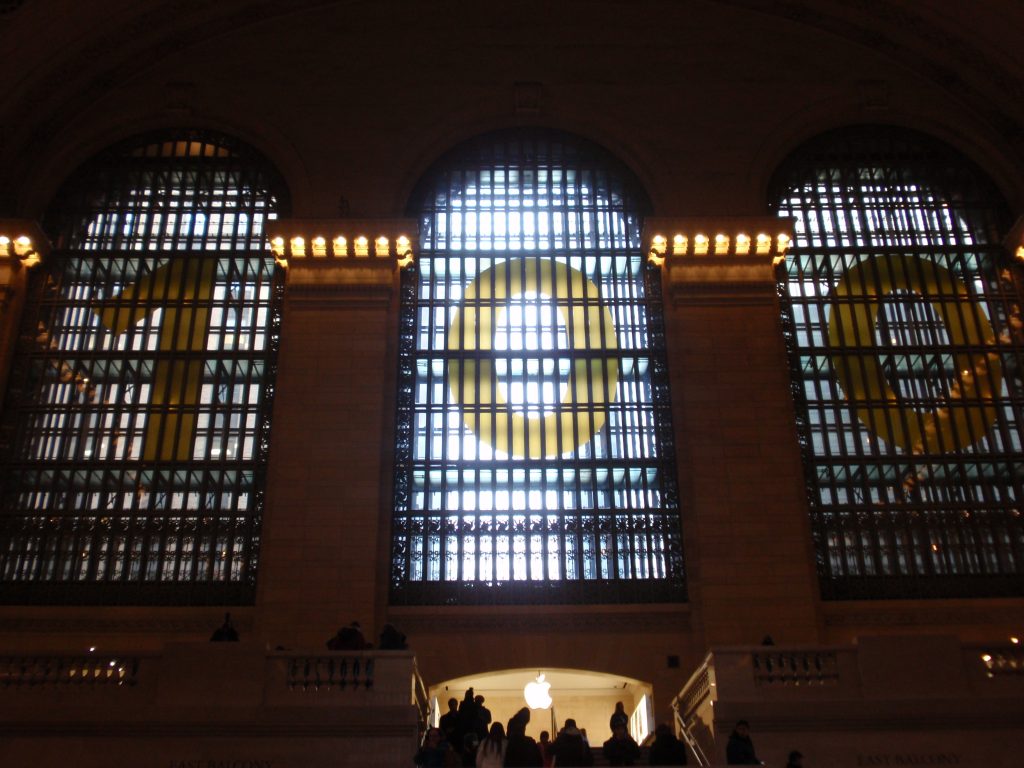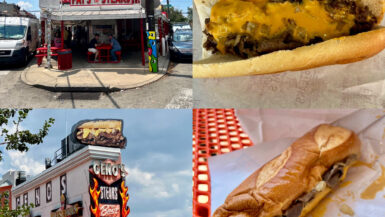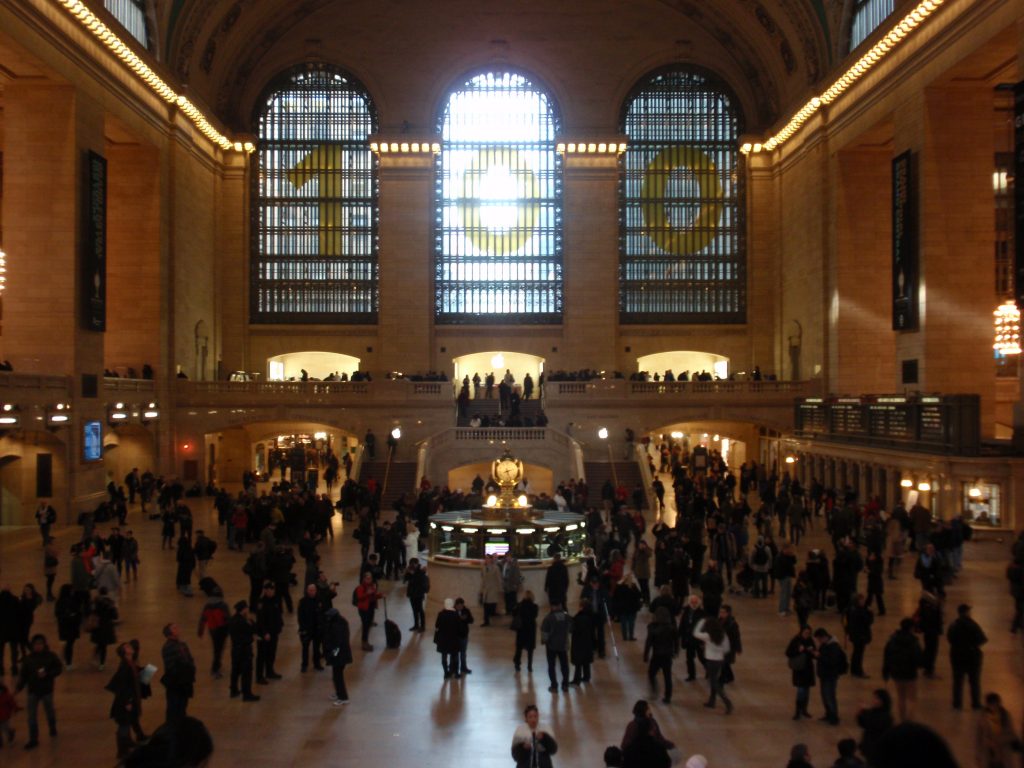
One of America’s most famous train stations can be found in the middle of downtown Manhattan at the corner of 42nd St. and Vanderbilt Avenue. That iconic station is Grand Central Terminal.
Since 1913, Grand Central Terminal, or just Grand Central, has been providing commuter rail service to New Yorkers, natives of upstate New York, and natives of Connecticut alike. It is more than just a place for commuters, it is one of the most beautiful buildings in all of New York, if not America, if not, dare I say, the world? Though it is a train station, locals know that the proper name is actually Grand Central Terminal. Grand Central Station refers to the name of the on site post-office. Only tourists refer to the place as a “station”.
The station’s first incarnation was built by renowned entrepreneurs, railroad and shipping magnates, the Vanderbilt family. He began his career as a board member of some of America’s most famous railroads like the Erie Railroad, the Central Railroad of New Jersey, the New York Central, and the New York and Harlem (later known as the Harlem). In 1869, he directed the Harlem to begin construction of the Grand Central Depot on 42nd St in Manhattan. It was finished in 1871, and served as his lines’ terminus in New York. He sank the tracks on 4th Avenue in a pit that later became a tunnel, and 4th Avenue became Park Avenue. The depot was replaced by Grand Central Terminal in 1913.
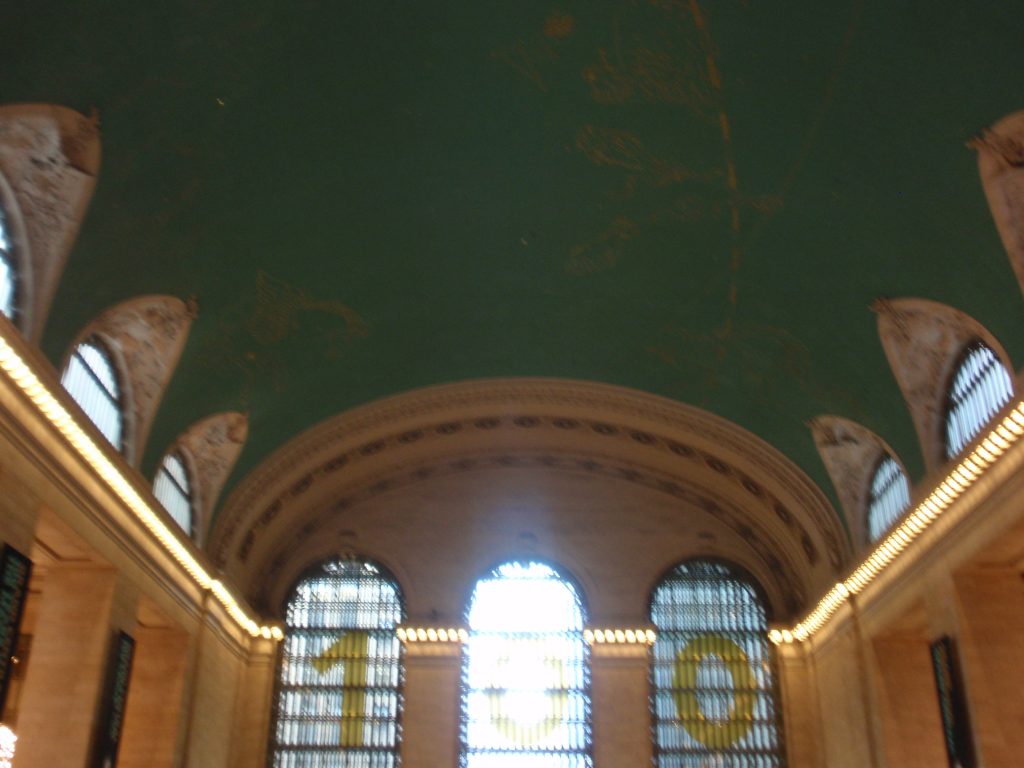
To say this station is massive is an understatement. There are a total of 44 tracks and 67 platforms. The ceiling of Grand Central Terminal is quite a site to behold. Look closely, and you’ll see a myriad of light bulbs as twinkling stars, set amongst a backwards painted zodiac. There are approximately 59 “stars” in the beautifully painted ceiling. Of course, if you have a strong case of vertigo, don’t stare up for too long; it’s really high!
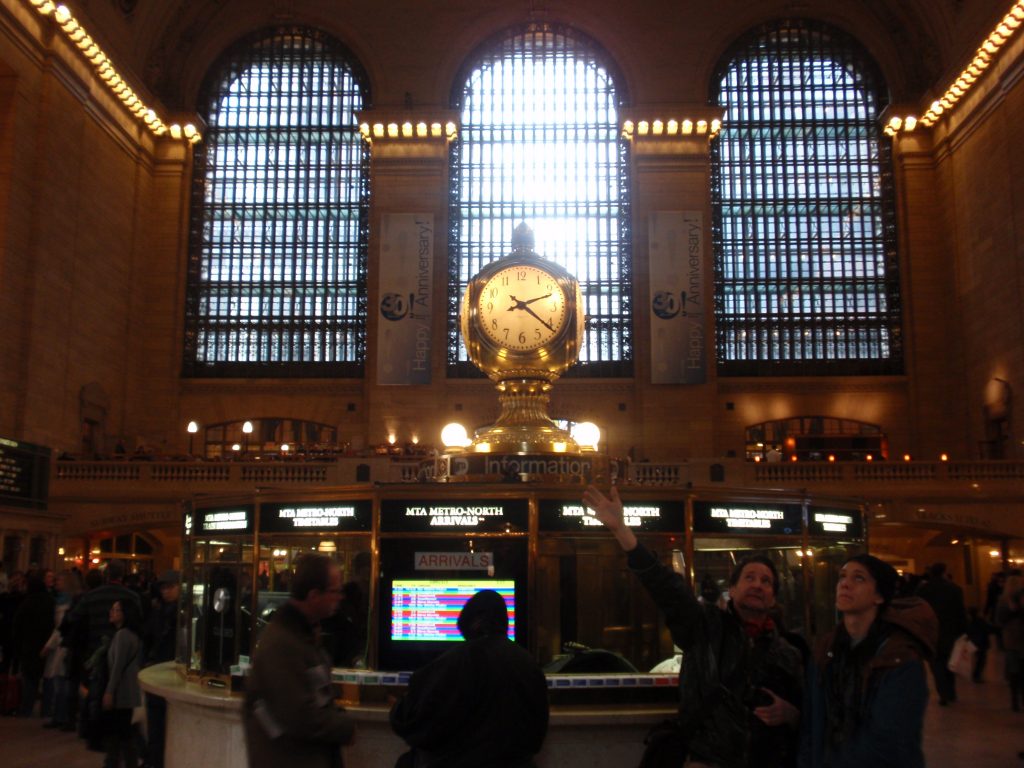
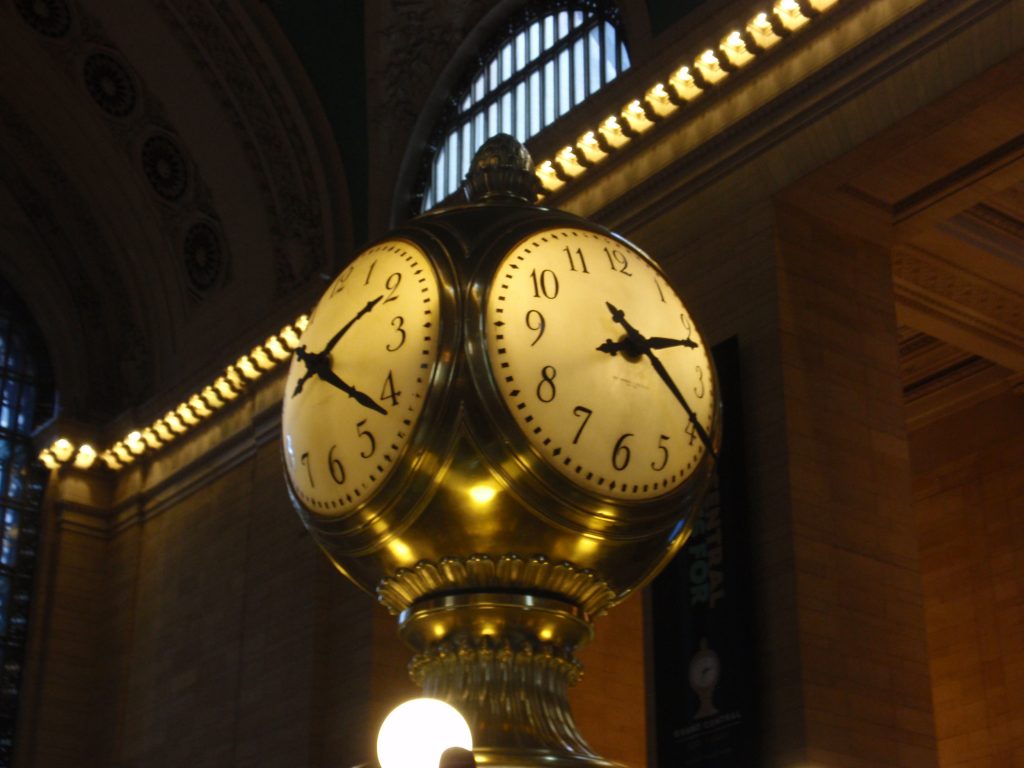
The main information booth is in the center of the concourse. This is a perennial meeting place, and the four-faced clock on top of the information booth is perhaps the most recognizable icon of Grand Central. Each of the four clock faces is made from opalescent glass. Sotheby’s and Christie’s have estimated the value of the opal to be between $10 million and $20 million; some of have considered this to be an urban legend.
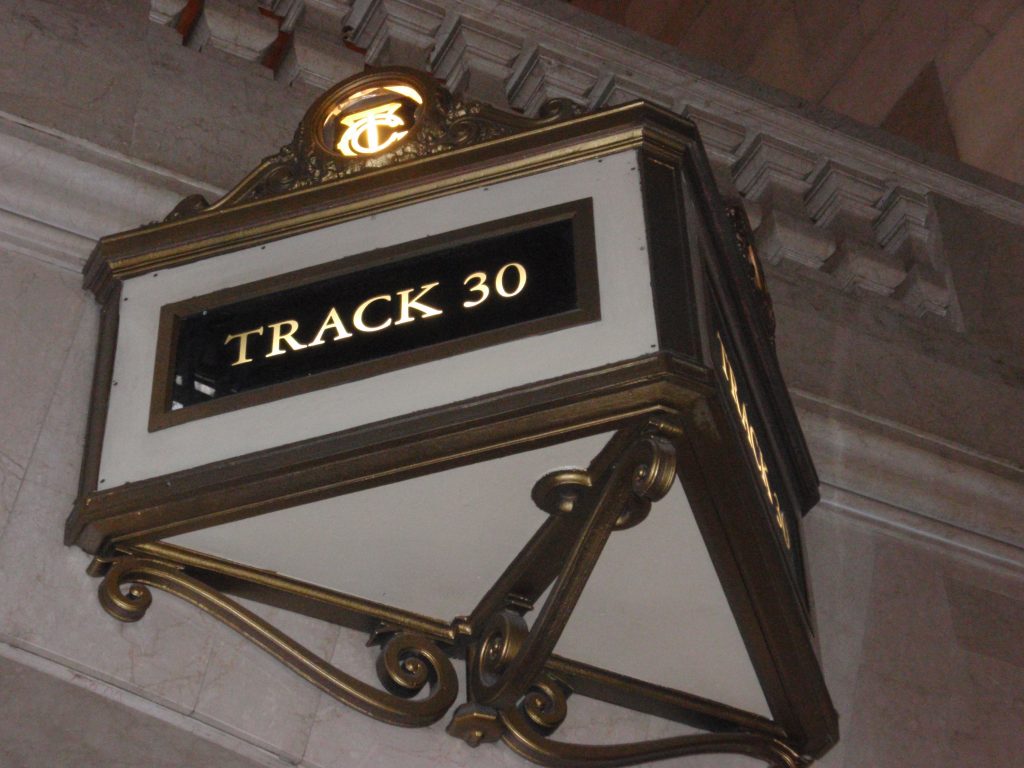
Though Grand Central has 44 tracks, don’t expect to find a perfectly numbered system to appear here. You’ll find track numbers in the triple digits on multiple floors of the station. The tracks are numbered according to their location in the terminal building. The upper level tracks are numbered 11 to 42 east to west. Tracks 22 and 31 were removed in the late 1990’s to build concourses for Grand Central North, track 12 was removed to expand the platform between tracks 11 and 13, and track 14 is only used for loading a garbage train. The lower level has 27 tracks, numbered 100 to 126, though only tracks 102 through 112, and 114 through 116 are currently used for passenger service. This makes it easy for passengers to quickly locate where their train is departing from, and this eliminates much of the confusion in attempting to locate specific trains in an immense terminal. The New York City Subway also travels under the terminal. The 4, 5, 6, and 7 trains meet up here; if you are headed to a Mets game in Queens, a Yankees game in the Bronx, the Bronx Zoo, or you’re headed down to Wall Street for some buying selling, this is the station for you. Locals and tourists can also hop on the S shuttle to Times Square. You know you’re in the right place when you see thousands of people running like mad to catch a train that isn’t the Metro North, and that leaves from just a single platform.
Grand Central is more than just a train depot, it is a food lovers depot as well! The Dining Concourse has central seating and lounge areas, surrounded by restaurants including the Oyster Bar with its Guastavino Tile vaults. The food court which rests below the terminal has a wide swath of items to choose from. There’s Chinese, Italian, Kosher, Greek, Middle Eastern, Thai, Indian, and good-old fashioned American. Sample some turkey chili, nosh on some hot dogs, chow down on some chow mein, cozy up with a bowl of matzo ball soup, enjoy some spicy chicken vindaloo, or cheat on your diet with a slice of cheesecake! And since the food court is literally steps from some of the platforms, you can beat the location for a busy commuter!
Shopping is also a must; there’s Swatch, an Apple store, a gift shop from the New York Transit Museum which features all kinds of toy train accessories, and a beautiful indoor market. Grand Central Market is a foodie’s delight; what better place to find ingredients to cook a five-star meal than a train station?!
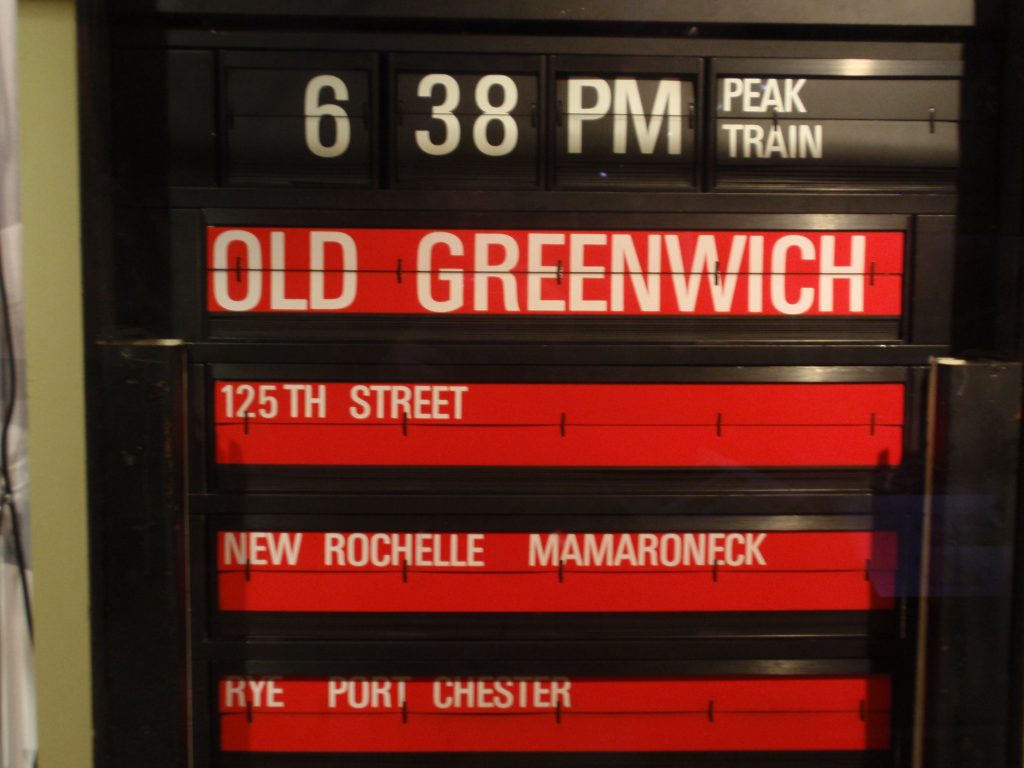
The original display boards was an electro-mechanical display that displayed times and track numbers of arriving and departing trains. It was known as a Solari board. Though the name may not sound familiar, commuters know this device from the oh-so catchy flip-flop sounds that it made when the destination clip boards rotated. It became a New York institution, as its many displays would flap simultaneously to reflect changes in train schedules, an indicator of just how busy Grand Central was. The flap-board destination sign was replaced with high resolution mosaic LCDs modules manufactured by Solari Udine of Italy, the maker of the original flap boards for train stations and airports. Similar modules are now also used on the trains, both on the sides to display the destination, and on the interior to display the time, next station, calling points, and other passenger information. Even with the high-technological LCD screens, in my opinion, there is just no substitute for the classic Solari flip board. I just miss hearing the symphony of “flip-flip-flip-flip”. Maybe its the ambiance, but if I’m making my way through a labyrinth of tunnels in a busy train station, the sound of Solari boards is pretty much the perfect accompaniment to a chaotic, yet exciting commute.
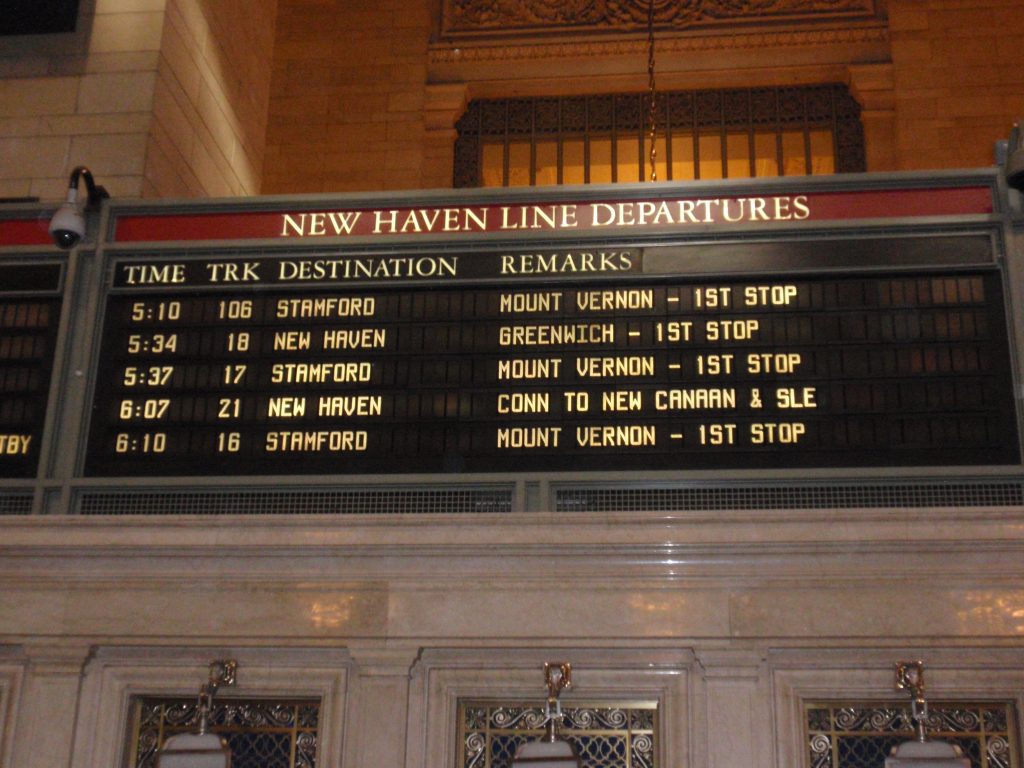
Right now, one of the biggest construction projects happening to Grand Central is the East Side Access, which will bring the Long Island Railroad into Grand Central, thus bringing Long Islanders into the East Side of Manhattan. When finished, it will be one of the biggest railroad infrastructure accomplishments in New York’s history. Originally planned to open in 2014, safety concerns, as well as budget overruns has pushed the project completion date back further and further. It is estimated that the LIRR access will be done around 2019. I certainly hope so, because if I’m going to come into New York by train, I want to end up in a station that reflects the spirit and ambiance of Manhattan. No disrespect to Penn Station, but unless you are headed for a Rangers, Knicks, or Liberty game from Long Island, the station has seen its better days. What I’m trying to say is, “C’mon LIRR, finish the damn access!”
Recently, Grand Central Terminal celebrated its 100th birthday. Happy Birthday Grand Central (not a station) Terminal! And many more…
